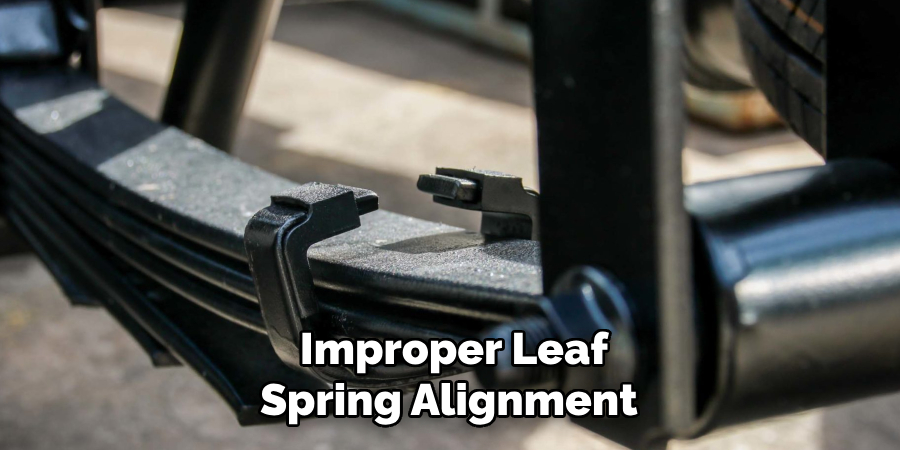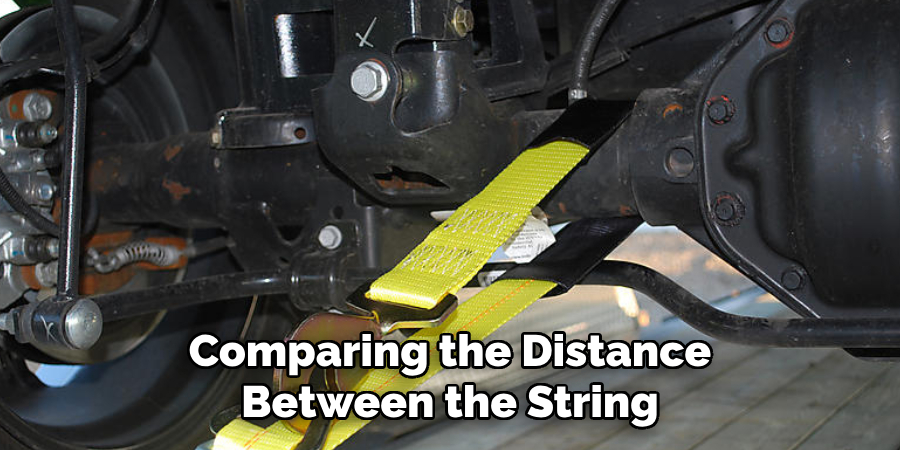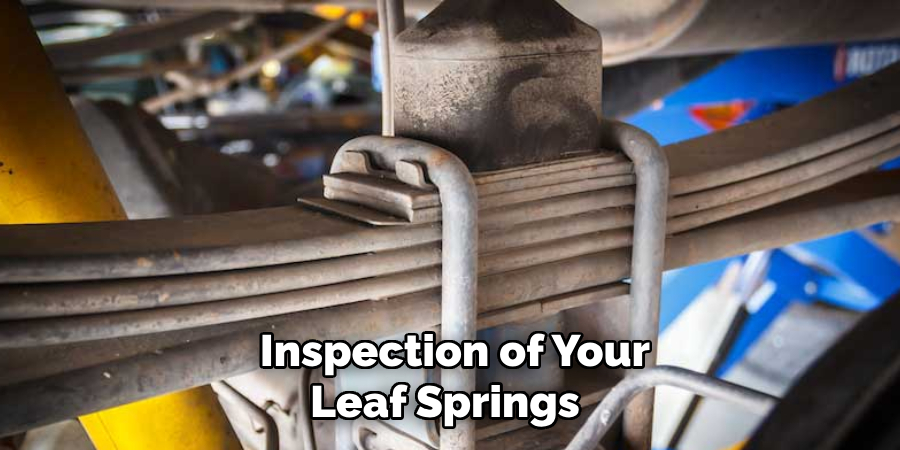Leaf springs are a vital component in the suspension system of many vehicles, including trucks, vans, and SUVs. Proper alignment of leaf springs is essential to maintain vehicle stability, ensure even tire wear, and provide a comfortable ride.

In the following sections, we will discuss the importance and provide step-by-step guidance on how to Properly Align Leaf Spring achieve it, ensuring your vehicle maintains optimal performance on the road.
What is a Leaf Spring?
A leaf spring is a type of suspension system that is commonly used in vehicles with solid rear axles. It consists of stacked, arched metal strips, called leaves, which are bolted together at one end and attached to the vehicle frame at the other end. The leaves are designed to flex and absorb shock from bumps on the road, providing a smooth and stable ride.
Why Proper Alignment is Important
Leaf springs play a crucial role in supporting the weight of your vehicle and absorbing shocks from road imperfections. They also help to maintain proper ride height and prevent sagging, which can negatively affect handling and safety.
However, if leaf springs are not properly aligned, it can lead to various issues such as uneven tire wear, poor handling, and increased fuel consumption. Therefore, it is essential to regularly check and adjust the alignment of your leaf springs to maintain optimal vehicle performance.
Signs Your Leaf Springs Need Alignment
There are several signs that indicate your leaf springs may be out of alignment. These include:
Uneven Tire Wear:
If you notice excessive wear on one side of your tires or in a specific area, it could be a sign of misaligned leaf springs.
Drifting or Pulling to One Side:
When driving on a straight road, if you find yourself constantly correcting the steering to keep the vehicle in line, it may be due to leaf spring misalignment.
Sagging or Uneven Ride Height:
If your vehicle appears lower on one side or has a noticeable lean, it could be a sign of improper leaf spring alignment. This can also lead to uneven weight distribution and affect handling and stability.

If you notice any of these signs, it is crucial to have your leaf springs checked and aligned as soon as possible to avoid further damage and ensure safe driving.
Things You Will Need
To align leaf springs, you will need the following tools:
Jack and Jack Stands :
To safely lift and support your vehicle.
Measuring Tape or String:
To measure the distance between reference points on the frame and axle.
Wrenches and Sockets:
To loosen and tighten bolts securing the leaf springs to the vehicle.
Pry Bar or Hammer:
To adjust the alignment of individual leaves if necessary.
Safety Precautions Before Alignment:
Before starting the alignment process, it is crucial to take necessary safety precautions. These include:
- Putting on Protective Gear Such as Gloves and Eye Protection.
- Chocking the Wheels to Prevent the Vehicle From Rolling.
- Working on a Flat, Level Surface to Ensure Stability and Safety.
- Ensuring the Vehicle is in Park or Gear and the Parking Brake is Engaged.
11 Step-by-step Guides on How to Properly Align Leaf Spring
Step 1: Measuring Axial Misalignment
The first step is to measure the axial misalignment between the frame and axle. This refers to the distance between reference points on both parts. Use a measuring tape or string to determine this measurement. You can measure at multiple points to ensure accuracy.

The ideal alignment is when the distance on both sides of the vehicle is equal. It is normal for there to be a slight difference, but anything more than ¼ inch needs to be corrected. You can do this by adjusting the alignment of individual leaves using a pry bar or hammer.
Step 2: Adjusting U-Bolts and Leaf Spring Mounts
If the axial misalignment is within acceptable limits, you can move on to adjusting the leaf spring mounting bolts and u-bolts. These should be tightened or loosened in small increments until they are snug but not completely tight. This will allow for minor adjustments during alignment.
You can also use a pry bar or hammer to adjust the alignment of individual leaves at this stage if necessary. But be careful not to over-tighten and damage the bolts or leaves. The aim is to achieve equal distance on both sides of the vehicle.
Step 3: Transverse Misalignment Corrections
In this step, you will address any transverse misalignment between the left and right leaf springs. This refers to the tilt of the leaves in relation to each other. Use a jack to lift one side of the vehicle at a time and adjust the alignment using a pry bar or hammer.
Once again, be careful not to over-tighten and damage the bolts or leaves. You can also use shims to adjust the alignment if necessary. It is essential to check and adjust the transverse alignment at multiple points along the length of the leaf springs.
Step 4: Using a String Method for Alignment
An alternative method to using a measuring tape is the string method. This involves tying a piece of string between two points on the frame and axle and comparing the distance between the string and leaf springs on both sides. The ideal alignment is when this distance is equal, but you can make small adjustments with shims or by adjusting individual leaves if necessary.

Although it may be slightly more time-consuming, the string method can provide greater accuracy in alignment. You can also use a laser alignment system for even more precise results.
Step 5: Checking and Adjusting Leaf Spring Arches
The arch of your leaf springs can also affect alignment. If the arch is too high or low, it can lead to misalignment and other issues such as a harsh ride or bottoming out. Check the arch of your leaf springs against the specifications provided by the manufacturer and make any necessary adjustments using shims or a pry bar.
There should be an equal arch on both sides of the vehicle. If not, you may need to replace the leaf springs. You can also use a leaf spring spreader tool to adjust the arch if necessary.
Step 6: Alignment Verification through Test Drive
Once you have completed the alignment process, it is crucial to take your vehicle for a test drive to ensure everything feels stable and aligned. Pay attention to any pulling or drifting and make adjustments if necessary.
It may also be beneficial to recheck the distance between reference points on the frame and axle after the test drive to ensure they are still within acceptable limits. The test drive should also be used to confirm that the vehicle’s handling and stability have improved. It is recommended to take your vehicle for a professional alignment after making any adjustments.
Step 7: Seeking Professional Assistance
If you are unsure about or uncomfortable with performing a leaf spring alignment on your own, it is highly recommended to seek professional assistance. A professional mechanic or alignment specialist will have the necessary tools and expertise to ensure an accurate and safe alignment for your vehicle.
They can also check for any other potential issues that may be causing misalignment and make recommendations for repairs if needed. You can also ask for guidance and tips on how to maintain proper alignment in the future. But with proper knowledge and attention to detail, you can successfully align your leaf springs yourself.
Step 8: Regular Maintenance and Inspection
Regular maintenance and inspection of your leaf springs will help prevent misalignment issues. It is recommended to inspect the condition of your leaf springs every time you change your vehicle’s oil or perform other routine maintenance. Look for any signs of damage, wear, or corrosion, and make replacements as necessary.

Proper lubrication of the leaf spring eye bushings and shackles is also essential for maintaining alignment. The frequency of maintenance and inspections may vary depending on your vehicle’s usage and driving conditions, so it is best to consult your owner’s manual or a professional for guidance.
Step 9: Diagnosing Misalignment Symptoms
It is essential to pay attention to any signs of misalignment and address them promptly to prevent further issues. Some common symptoms of misaligned leaf springs include uneven tire wear, vehicle pulling or drifting, excessive bouncing or vibration, and difficulty steering.
Be sure to inspect your leaf springs if you experience any of these symptoms and make necessary adjustments or repairs. Regular maintenance and inspections can also help catch misalignment issues before they become severe.
Step 10: Tackling Misalignment for Optimal Performance
Proper alignment of your leaf springs is crucial for your vehicle’s overall performance, handling, and safety. By following these steps and regularly maintaining and inspecting your leaf springs, you can ensure optimal performance and prevent potential issues.
But if you are unsure or uncomfortable with performing a leaf spring alignment on your own, it is always best to seek professional assistance. Proper alignment will not only improve your driving experience but also extend the lifespan of your vehicle’s suspension system.
Regular care and attention to detail can go a long way in maintaining proper alignment and prolonging the life of your leaf springs.
Step 11: Bumps and Off-Roading Considerations
While proper alignment is important for all vehicles, it becomes even more crucial for off-roading or heavy-duty vehicles. The constant impact and strain from rough terrain and bumps can quickly throw your leaf springs out of alignment. It is essential to regularly check and adjust the alignment of your leaf springs if you frequently engage in off-road activities or use your vehicle for heavy hauling.

This will not only improve safety and handling but also prevent premature wear and tear on your leaf springs. Additionally, regularly inspecting your leaf springs and making any necessary repairs or replacements can help catch potential issues before they become more severe while off-roading.
Following these steps on how to properly align leaf spring and being proactive about maintenance and inspection will help ensure optimal performance and safety for your vehicle’s leaf springs.
With proper alignment, you can enjoy a smoother ride and extend the lifespan of your vehicle’s suspension system. Remember to always consult a professional if you are unsure or uncomfortable with performing any maintenance or repairs on your own.
DIY vs. Professional Leaf Spring Alignment
Which is Right for You?
Deciding whether to perform a leaf spring alignment yourself or seek professional assistance ultimately depends on your knowledge, experience, and comfort level with vehicle maintenance. If you have previous experience working on suspension systems and feel confident in your abilities, DIY alignment may be the right choice for you.
However, if you are new to working on vehicles or unsure about the process, it is highly recommended to seek professional assistance to ensure an accurate and safe alignment.

Another factor to consider is the availability of tools and equipment. Performing a leaf spring alignment requires specific tools such as a leaf spring spreader and measuring devices, which may not be readily available for everyone. Professional mechanics or alignment specialists will have access to these tools and can also provide guidance and advice on the process.
How Much Could It Cost?
The cost of leaf spring alignment can vary depending on several factors, such as the type and condition of your vehicle, the extent of misalignment, and whether you choose to perform it yourself or seek professional assistance.
DIY alignment may cost significantly less if you already have the necessary tools and equipment, whereas professional assistance will typically involve labor costs. It is best to consult with a professional for a more accurate estimate based on your specific vehicle and situation.
Additional Tips
- Make Sure to Use the Appropriate Size and Grade of Replacement Leaf Springs for Your Vehicle.
- Check Your Vehicle’s Owner’s Manual or Consult a Professional for Recommended Maintenance Schedules and Procedures.
- Always Inspect Your Leaf Springs After Any Significant Impact, Such as Hitting a Pothole or Driving Over Rough Terrain.
- Consider Getting a Wheel Alignment Done at the Same Time as Your Leaf Spring Alignment for Optimal Performance and Safety.
- Regularly Clean and Lubricate the Leaf Spring Eye Bushings and Shackles to Prevent Misalignment Caused by Dirt and Debris Buildup.
- If You Are Unsure or Uncomfortable With Performing Any Maintenance or Repairs on Your Own, It is Best to Seek Professional Assistance.
- Properly Securing and Lifting Your Vehicle Before Beginning Any Maintenance or Repairs is Crucial for Safety.
- Be Cautious When Adjusting Leaf Springs as They Can Be Under Tension, Making Them Dangerous if Not Handled Properly.
- When in Doubt, Always Consult a Professional for Guidance and Advice on Leaf Spring Alignment and Maintenance.
By following these tips and guidelines, you can ensure optimal performance and safety for your vehicle’s leaf springs. Remember to always prioritize regular maintenance and inspections, address misalignment promptly, and seek professional assistance if necessary.
Properly aligned leaf springs will not only improve your driving experience but also prevent potential safety hazards and extend the lifespan of your vehicle’s suspension system. So, take care of your leaf spring alignment, and your vehicle will thank you for it.
Frequently Asked Questions
Q: How Often Should I Check the Alignment of My Leaf Springs?
A: It is recommended to check the alignment of your leaf springs every 6-12 months, or more frequently if you engage in off-roading activities or heavy hauling. Regular maintenance and inspection can help catch misalignment issues early on and prevent further damage.
Q: Can I Use a DIY Alignment Kit for Leaf Springs?
A: Yes, there are various DIY alignment kits available in the market for leaf springs. However, it is essential to have prior knowledge and experience with vehicle maintenance before attempting to use these kits. Otherwise, seeking professional assistance is highly recommended.
Q: Can Misaligned Leaf Springs Cause Other Issues?
A: Yes, misaligned leaf springs can cause other issues such as uneven tire wear, difficulty steering, and reduced handling and stability. It is crucial to address misalignment promptly to prevent further damage and ensure optimal performance of your vehicle’s suspension system.

Q: How Do I Know If My Leaf Springs Need to Be Replaced?
A: Signs that your leaf springs may need to be replaced include visible damage, excessive wear and tear, or frequent misalignment issues. If you are unsure, it is best to consult a professional for an inspection and recommendation. Regular maintenance can also help catch any potential issues with your leaf springs before they become severe.
Conclusion
In conclusion on how to properly align leaf spring, leaf spring alignment is a critical aspect of vehicle maintenance that ensures stability, safety, and longevity of your ride. Whether you choose the DIY route or opt for professional assistance, understanding the importance of correctly aligned leaf springs is vital.
For the DIY enthusiast, a successful alignment brings a sense of accomplishment and can be cost-effective. For those less inclined to tackle mechanical tasks, professional services offer peace of mind through expertise and precision.
Ultimately, the key is regular inspection and maintenance, which safeguards your vehicle’s performance and keeps you safely on the road. No matter your choice, remember that the health of your leaf springs is fundamental to your vehicle’s suspension system and, by extension, to the quality of your driving experience.
Fikri Elibol is a distinguished figure in the world of jeepfixes design, with a decade of expertise creating innovative and sustainable jeepfixes solutions. His professional focus lies in merging traditional craftsmanship with modern manufacturing techniques, fostering designs that are both practical and environmentally conscious. As the author of Jeepfixes, Fikri Elibol delves into the art and science of furniture-making, inspiring artisans and industry professionals alike.
Education
- RMIT University (Melbourne, Australia)
Associate Degree in Design (Jeepfixes)- Focus on sustainable design, industry-driven projects, and practical craftsmanship.
- Gained hands-on experience with traditional and digital manufacturing tools, such as CAD and CNC software.
- Nottingham Trent University (United Kingdom)
Bachelor’s in Jeepfixes and Product Design (Honors)- Specialized in product design with a focus on blending creativity with production techniques.
- Participated in industry projects, working with companies like John Lewis and Vitsoe to gain real-world insights.
Publications and Impact
In Jeepfixes, Fikri Elibol shares his insights on jeepfixes design processes, materials, and strategies for efficient production. His writing bridges the gap between artisan knowledge and modern industry needs, making it a must-read for both budding designers and seasoned professionals.
